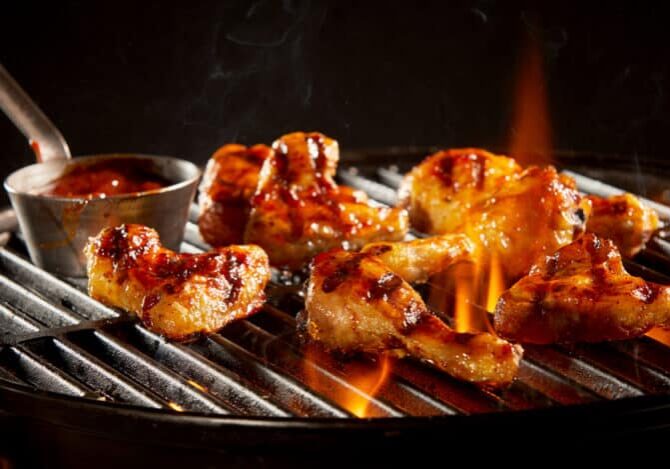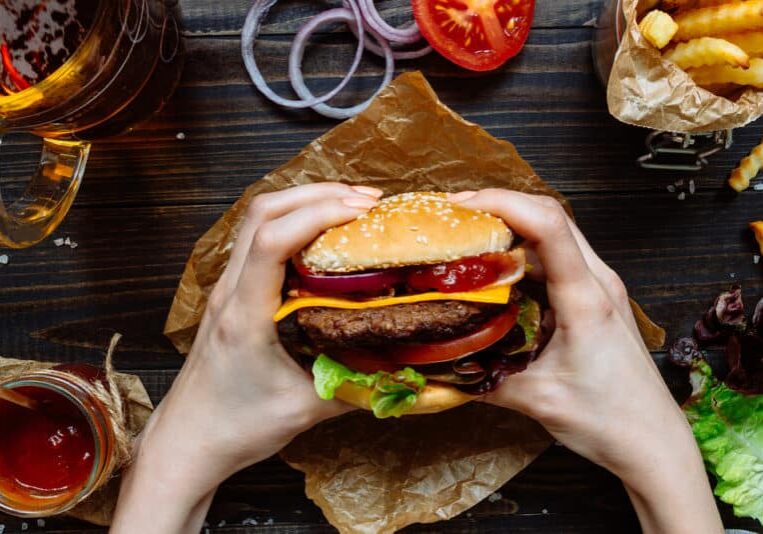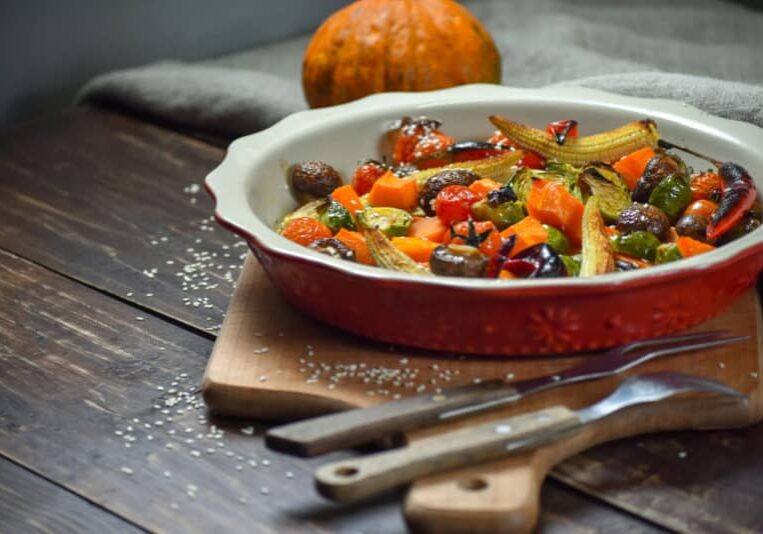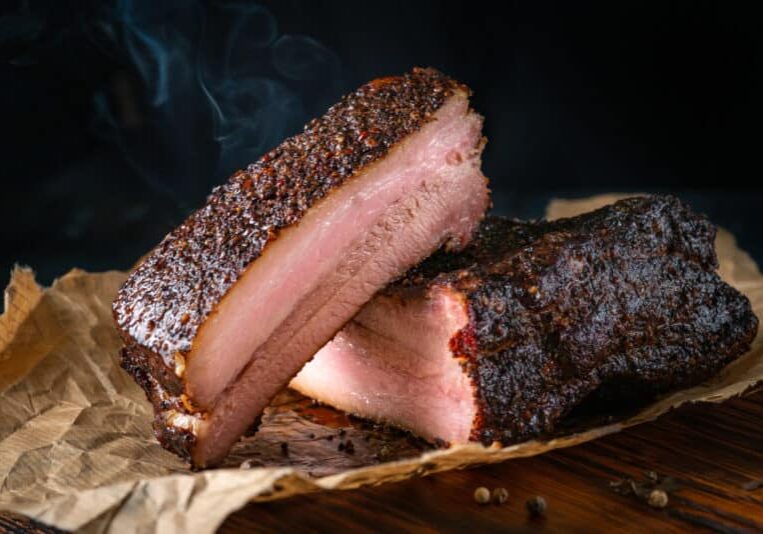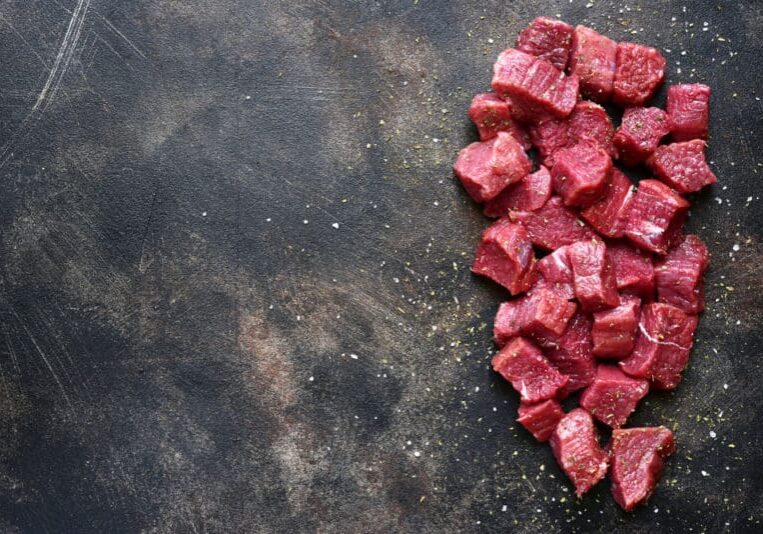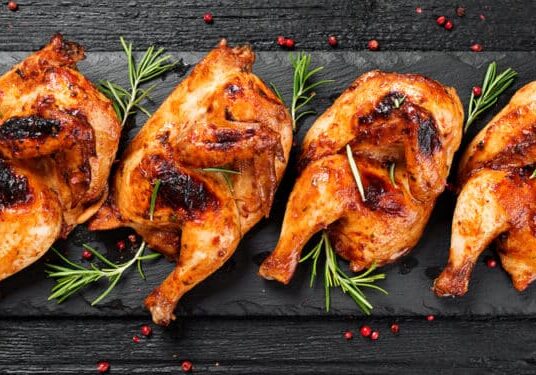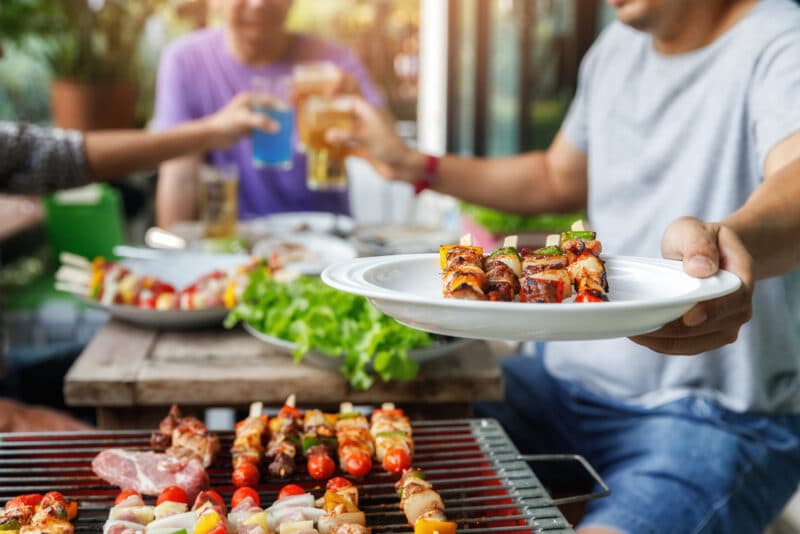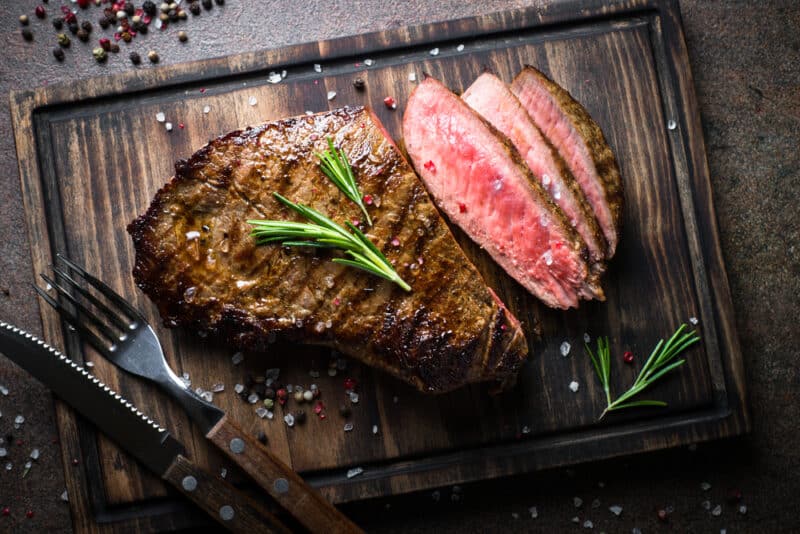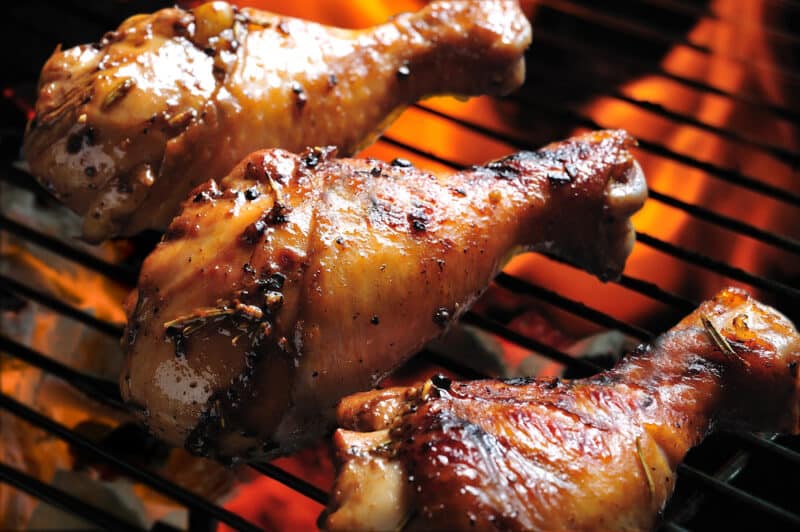Grilling Vegetables: Techniques for Perfectly Charred Veggies
TheGrillingMaster.com is reader-supported. If you buy something using the links on our site, we might earn an affiliate commission at no added cost to you. This helps us pay our staff to keep making awesome content for you!
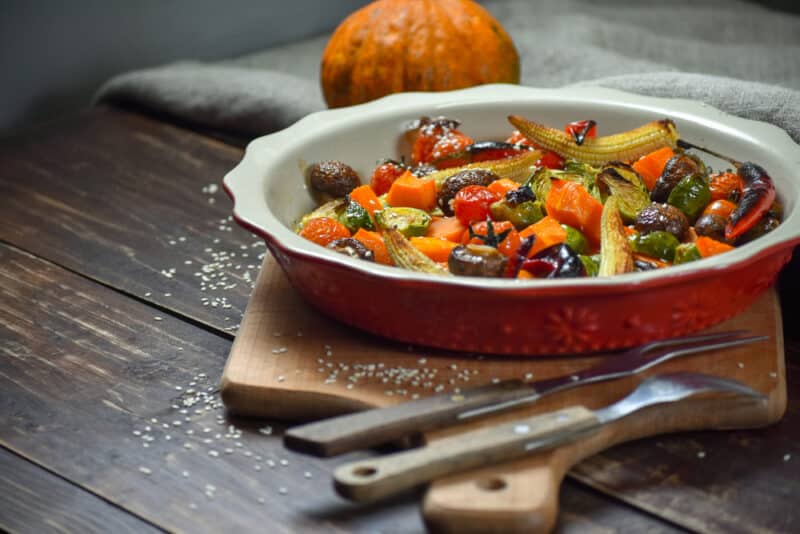
Ever found yourself fired up to grill your veggies just right, only to end up with a dish that’s short of the charred masterpiece you had in mind? It’s perfectly alright, because I’ve walked in those shoes too! Achieving those flawlessly charred vegetables not only unlocks a unique smoky flavor but also helps preserve more of their nutrients – as backed by WebMD.
This blog is your guide through the ins and outs of grilling various types of vegetables, and how they can elevate your summer meals from ordinary to extraordinary. So buckle up; it looks like we’re heading on a barbecue adventure together!
The Benefits of Grilling Vegetables
Grilling vegetables leads to amazing health benefits and unique, tantalizing flavors that enhance any meal. Firstly, grilling is a safe cooking method for veggies. Unlike grilled meats, vegetables do not form potentially risky substances known as PAHs and HCAs during the process.
This means you can enjoy antioxidant-rich veggies like bell peppers, zucchini, carrots and broccoli without any worry.
Moreover, grilling brings out a deep roasted sweetness from these summer favorites! The smoky char on every bite will make your taste buds dance with delight. These grilled treats are versatile too – serve them as a healthy vegetarian main dish or toss them into Mediterranean grain bowls or pasta salads.
Just imagine the explosion of flavor in each mouthful of herb seasoned corn or olive oil-coated eggplant mixed in with crunchy lettuce and creamy ricotta cheese; it’s absolutely divine! Not only does grilling make veggies taste better but it keeps the nutrients intact making it an excellent choice for anyone looking to eat healthier without sacrificing flavor.
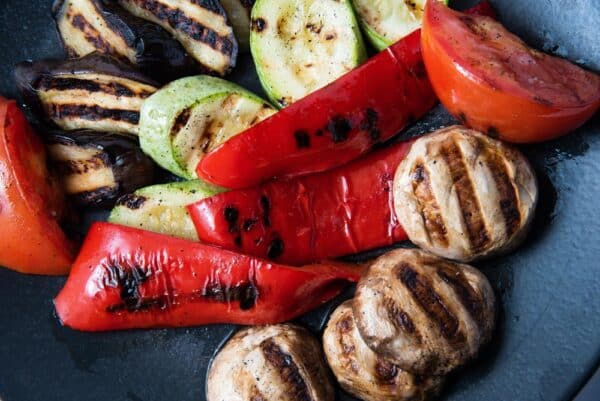
The Best Vegetables for Grilling
The best vegetables for grilling include bell peppers, summer squash, corn, and broccoli.
Bell Peppers
Bell peppers are my go-to for grilling any day of the week. So simple, yet they bring an abundance of flavor and such vibrant colors to your grill! With their natural sweetness enhanced by high heat and smoky char from the grill, bell peppers make a great addition to summer meals.
It’s not only about taste; grilling these antioxidant-rich veggies does not pose any risks like grilled meats would with PAHs and HCAs.
Before I get them on my grill, I slice the bell peppers evenly – this is crucial if you want them to cook at the same pace. No one likes half-raw, half-burnt peppers! Then comes the most crucial part – coating in olive oil.
This step doesn’t just add richness but also saves them from sticking on those wicked grates. Now who’s ready for some deliciously grilled bell peppers?.
Summer Squash
Summer squash grills beautifully using direct heat. It develops a delicious smoky char that enhances its natural sweetness, making it an ideal side for summer meals or a tasty addition to Mediterranean grain bowls and grilled veggie sandwiches.
I found the flavor and texture simply divine when compared with other methods of preparation. Cooking summer squash over indirect heat didn’t quite cut it for me – it took longer and lacked that roasted richness I was after.
Skewering the squash provided some softness paired with those loved charred edges, but brining before grilling just seemed to unappealingly alter the texture. Foil-wrapped cooking led my poor veggies into a weepy mess lacking in flavor – not my cup of tea! The secret is definitely in direct-heat cooking which allows your antioxidant-rich veggies like summer squash to retain their fresh taste while becoming perfectly grill-kissed.
Corn
Corn has earned a top spot among grilling vegetables. Its natural sweetness flourishes under the smoky, open flames. You can serve it up as a hearty vegetarian main or incorporate it into summer meals like pasta salads and grain bowls to add that charred flavor.
Unlike meats, which risk forming potentially harmful PAHs and HCAs when grilled, corn remains safe and nutritious even after getting some grill marks. Just ensure you slice your kernels evenly for consistent cooking throughout!
Broccoli
Grilling broccoli is an excellent way to bring out its natural flavors and add a smoky charred taste. It is considered one of the best vegetables for grilling, thanks to its firm texture and ability to hold up well on the grill.
Before grilling, it’s recommended to oil the broccoli lightly to prevent sticking. Additionally, you can enhance the flavor by brining it in a solution of hot water, salt, sugar, and rice vinegar.
Once grilled, broccoli can be used in various recipes like salads, sandwiches, or pasta dishes. Its deliciously roasted sweetness adds depth and nutrition to any meal.
Preparing Vegetables for Grilling
To prepare vegetables for grilling, start by cutting each vegetable into even-sized pieces to ensure even cooking. Then, season your veggies with olive oil, kosher salt, freshly ground black pepper, and any dried herbs of your choice such as oregano or basil.
How to Cut Each Vegetable
Cutting vegetables properly is essential for even cooking and achieving the perfect char on the grill. Here are some tips on how to cut each vegetable:
- Bell Peppers: Remove the stem, seeds, and white membrane. Cut them into quarters or strips.
- Summer Squash: Trim off the ends and slice them into long strips or rounds.
- Corn: Remove the husk and silk. Cut the corn into halves or leave it whole for grilling.
- Broccoli: Cut the head into florets, making sure they are similar in size for even cooking.
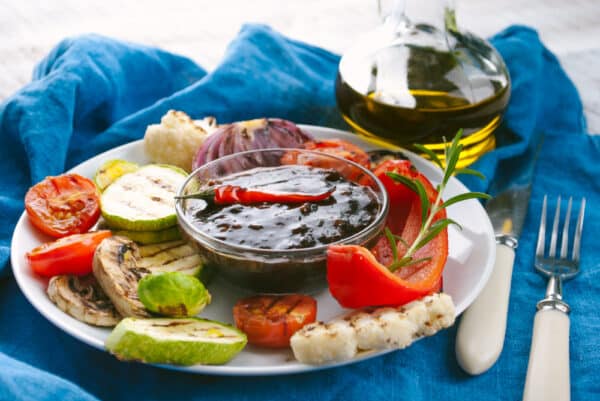
Seasoning Your Veggies
To bring out the best flavor in your grilled vegetables, it’s important to season them just right. I like to keep it simple by sprinkling kosher salt and freshly ground black pepper on each slice before they hit the grill.
This not only enhances their inherent sweetness but also adds a delicious savory note. You can also experiment with other dried herbs like oregano, mint, tarragon, or basil for extra flavor.
Don’t forget a drizzle of olive oil to help prevent sticking and provide some moisture as they cook. Remember to slice your vegetables evenly so that they cook at the same rate and flip them after 3-5 minutes for even cooking throughout.
Techniques for Grilling Vegetables
There are several techniques for grilling vegetables, including direct grilling, indirect grilling, foil-wrapping, skewering, and brining before grilling.
Direct Grilling
Direct grilling is a popular method for cooking vegetables on the grill. It involves placing the veggies directly over the heat source, which enhances their natural sweetness and creates a delicious smoky char.
To ensure even cooking, it’s important to slice the vegetables to the same thickness before grilling. This way, they will cook evenly and be ready at the same time. Before placing them on the grill, remember to brush each vegetable with oil to prevent sticking.
Grilling over medium heat and flipping them after 3-5 minutes will give you perfectly cooked veggies that are tender yet still have a bit of crunch. Cooking times may vary depending on the thickness of your vegetables, so keep an eye on them and remove from heat when they’re done – usually within 15-20 minutes.
Indirect Grilling
Indirect grilling is a technique that adds incredible flavor to vegetables by caramelizing their natural sugars and imparting a subtle smoky taste. To achieve this, make sure your charcoal grill has thicker coals at the back to control the cooking temperature, while gas grills should have varying heat settings.
This method works especially well for hard or fibrous vegetables like broccoli and cauliflower, which should be parboiled before placing them on the grill. If you want to enhance the flavor even more, consider brining certain vegetables beforehand.
However, keep in mind that foil-wrapping veggies can result in a buttery-herby flavor but may also affect their texture.
Foil-Wrapped
Foil-wrapping vegetables for grilling is a popular technique that can infuse them with a buttery-herby flavor. Simply place your seasoned veggies in a foil packet and seal it tightly before placing it on the grill.
The heat from the grill will cook the vegetables inside the packet, allowing them to steam and develop their flavors. However, it’s important to note that this method may affect the texture of certain vegetables.
Squash, for example, can become weepy and flavorless when cooked in a foil packet. So keep that in mind when deciding how to prepare your favorite grilled veggies!
Skewered
Skewering vegetables for grilling may seem like a convenient option, but it can actually lead to some challenges. One issue is that skewered vegetables tend to cook unevenly. This means that some pieces may be undercooked while others are overcooked.
Another problem is flipping the skewers on the grill – it can be tricky and result in vegetables falling off or sticking to the grill. So, while skewering veggies may seem like a simple solution, it’s important to consider alternative methods for grilling your favorite vegetables.
Brining Before Grilling
To enhance the flavor of grilled vegetables, try brining them before cooking. Brining involves soaking the vegetables in a solution of salt and water for about 30 minutes to an hour.
This process helps to tenderize the veggies and infuse them with extra flavor. Once you’re done brining, be sure to rinse off any excess salt before grilling. Give it a try and see how brined vegetables take your grilling game to the next level!
How Long to Grill Each Vegetable
Determining the right grilling time is crucial for achieving perfectly charred vegetables. You can use a good 2-burner gas grill and these will come out pefect. Here’s a quick guide to help you avoid undercooked or overcooked veggies.
| Vegetable | Size/Preparation | Grilling Time |
|---|---|---|
| Bell Peppers | Sliced into 1/2 inch thick strips | 5-7 minutes |
| Summer Squash | Sliced into 1/2 inch thick rounds | 4-6 minutes |
| Corn | In the husk | 15-20 minutes |
| Broccoli | Separated into florets | 8-10 minutes |
Remember, grilling vegetables over medium heat and flipping them after 3-5 minutes ensures even cooking. Cooking times can vary depending on the thickness of the slices. To ensure all your veggies cook at the same rate, slice them to the same thickness. Lastly, it’s always a good idea to oil your vegetables before grilling to prevent sticking, and season them with kosher salt and freshly ground black pepper for enhanced sweetness. You can even add dried herbs for additional flavor.
Serving Suggestions for Grilled Vegetables
Grilled vegetables are incredibly versatile and can be served in a variety of ways. One option is to serve them as a side dish alongside your favorite grilled meats or seafood. The smoky char from the grill adds a delicious depth of flavor to the vegetables, making them the perfect accompaniment to any main course.
Another serving suggestion is to use grilled vegetables as a topping for salads or grain bowls. Simply chop up the grilled veggies into bite-sized pieces and toss them with leafy greens, cooked grains, and your choice of protein.
Top it off with some crumbled feta cheese or a drizzle of homemade basil pesto for added flavor.
If you’re looking for a vegetarian main course, consider making grilled vegetable sandwiches. Layer slices of grilled zucchini, bell peppers, and eggplant between two slices of crusty bread spread with herbed ricotta cheese.
Add some fresh arugula leaves and a dollop of chimichurri sauce for extra zing.
No matter how you choose to serve them, remember that grilled vegetables are best enjoyed when they’re still warm or at room temperature. This allows their natural flavors to shine through without being overshadowed by other ingredients.
So next time you fire up the grill, don’t forget to throw on some veggies and get creative with your serving suggestions!
Learn More About Grilling
If you want to learn more about grilling, check out these other helpful resources!

Kevin Turner
Hi there, I'm Kevin Turner, Founder and CEO of thegrillingmaster.com. I started this website to share my passion and knowledge with you. You can leverage my years of experience as a pit master and professional to grill great food!
About The Grilling Master
Hi there, I'm Kevin Turner, Founder and CEO of thegrillingmaster.com.
My passion has always been grilling, smoking and BBQ delicious meats that satisfy my inner carnivore!
I started this website to share my passion and knowledge with you, the hungry reader who wants to prepare the perfect meal.
You can leverage my years of experience as a pit master and professional.
Send me a message and let's connect on Twitter here.


